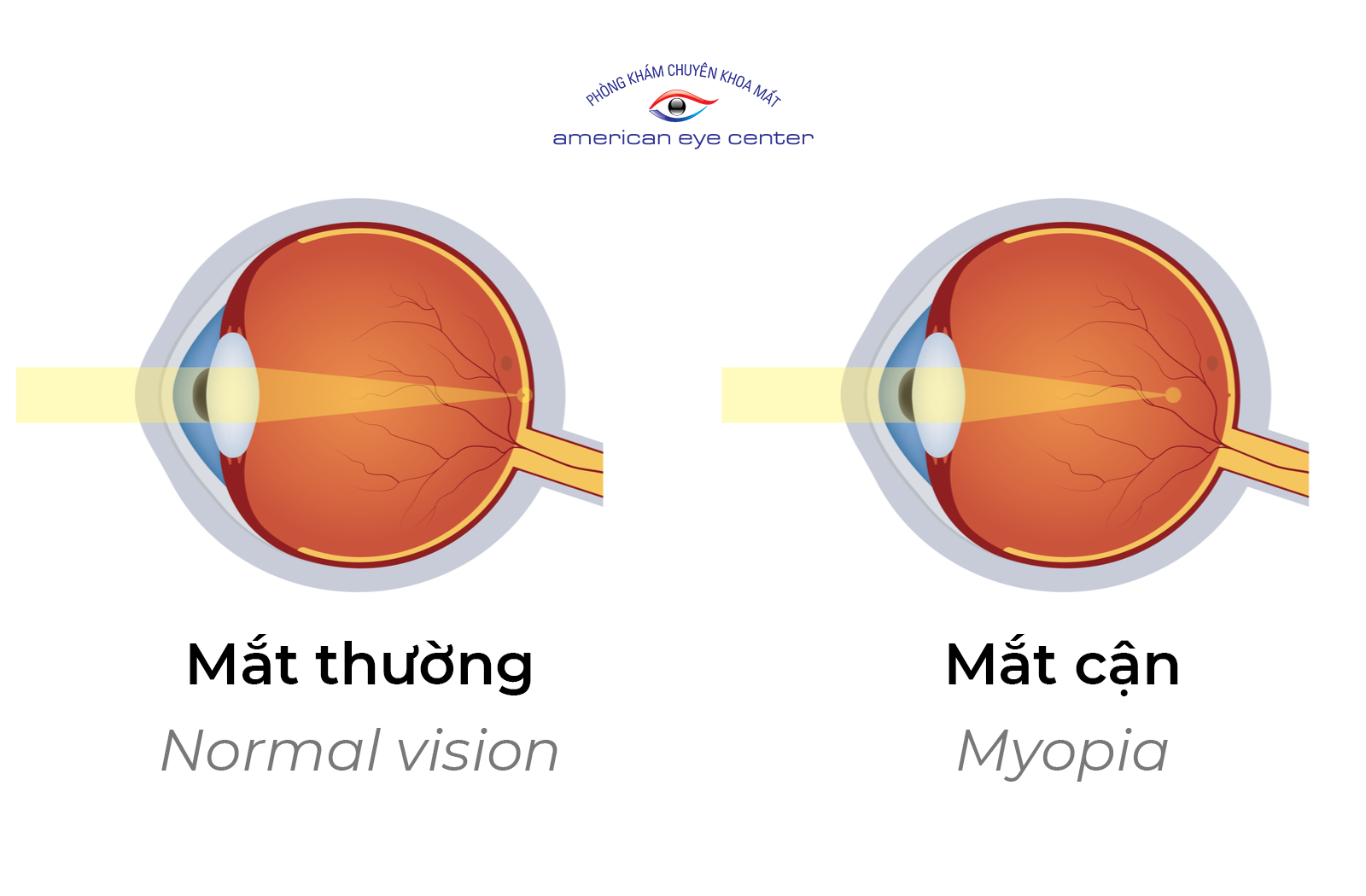What does it mean when my child has myopia?
‘Myopia’ or ‘nearsightedness’ is a condition where your child sees close-up objects clearly, but cannot see distance objects (such as the blackboard) clearly. Many children with myopia also have astigmatism (another type of focusing abnormality). Myopia commonly develops during school age and progresses gradually, requiring stronger glasses to see clearly for distance, until it often stabilizes in late teens.
In essence, myopia occurs when the eye is too long or the lens system of the eye is too strong. In both instances, the object image is focused in front of instead of on the retina (the light-sensitive area in the back of the eye) and the image is seen blurred. High myopia increases the life-long risk of developing earlier cataracts, glaucoma and retinal detachment.

There is evidence that myopia is to a significant degree genetically determined. If one or both parents are myopic, there is a higher probability that the child will also develop myopia. In addition, myopia is more common among Asian children than among children in Europe, USA or Africa.
Increased levels of education, income level, urbanization and time spent indoors are contributing to a dramatic increase in myopia. For example, it has been shown that there is a much higher level of myopia among children living in big cities than in children living in rural environments.
Methods of correcting myopia
Methods we use to reduce myopia progression
Appropriate to the age of the child, degree of myopia and eye health, we may prescribe one or a combination of these methods:

Frequently Asked Questions
Atropine 0.01% for myopia control
Atropine eye drops are placed on the eye once a day at bedtime.
Atropine has been found in several large studies to reduce the progression of myopia, meaning that patients who were given the drug did not become as myopic as those patients without the medication. Atropine was presumed for many years to have its effect due to its action of stopping the eye's ability to change focus. The newest theory is that Atropine acts directly or indirectly on the retina or sclera, inhibiting stretching or thinning of the sclera and thus inhibiting excessive growth.
Atropine 0.01% used for myopia control is a concentration of Atropine that is 1/100th the concentration of the commercially available Atropine 1% solution. Thus, very few side effects are ever present. In the five-year clinical trial Atropine for the Treatment of Myopia Study 2 (ATOM2), investigators in Singapore showed that Atropine 0.01% drops safely slowed down the progression of myopia by about 50 percent with almost no side effects. However, since no medication or treatment comes without its potential adverse effects or complications, Atropine should be used with close monitoring by your eye doctor.
Children and young adults who have onset of nearsightedness before age 10 years, rapid increase in glasses prescription of -1D/year or more, very high myopia of -8D or more, or family history of parents or siblings with myopia greater than -6 D may benefit from Atropine treatment.
Your eye doctor will do a comprehensive eye exam to include vision testing, refraction, eye pressure test, and eye length measurement prior to prescribing Atropine for your child. If your child tolerates the medication well, the treatment is continued for at least 6 months and continues for as long as myopia progression is considered a risk. Follow-up is every 6 months with repeat measurements. When myopia is stable for at least 1 year and your child is over 12 years old, your doctor may consider stopping the medication.